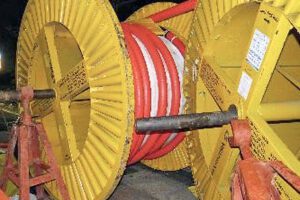DRUG COMPLIANCE IN WA MINING
Schedule 8 drugs are those drugs listed in schedule 8 of the current Poisons Standard, as defined in the Therapeutic Goods Act 1989 (Commonwealth). In essence these are drugs requiring restrictions relating to the: manufacture; supply; distribution; possession and use. This is to reduce the possible abuse, misuse and physical or psychological dependence associated with these drugs. Mine site medical clinics located far from tertiary care providers hold these drugs to treat ill or injured persons in a timely fashion. Examples of these drugs include morphine and pethadine.
LEGAL FRAMEWORK
The Poisons Act 1964 (‘PA’) and the Poisons Regulations 1965 form the framework that governs schedule 8 drugs on mines. There is also a Code of Practice for ‘Poisons Permits for Medical Treatment’ outlining the main requirements of the PA.
For safety staff working with schedule 8 drugs, compliance with the legislative framework is essential. Contraventions or failures to comply with provisions of the PA or any regulations may be considered to be an offence. The person may be liable upon conviction to a penalty of up to $5,000 and, if the offence is a continuing offence, to a daily penalty of up to $500.
Schedule 8 drugs are held on mines under a Poisons Permit. The poisons permit holder (‘PPH’) is responsible for the purchase, storage, security and use of all medications for that particular mine. The PPH must implement and maintain suitable systems that: restrict access; ensure correct storage; correct administration and correct records of use are maintained. This is best achieved by a site visit by the PPH and an audit of all processes and policies in place. This audit should be inclusive and cover the way that drugs are ordered, stock levels are maintained and drugs are administered using pre-written authorisations, through to how destruction of drugs occurs.
STORAGE REQUIREMENTS
The standard for storing schedule 8 drugs is strict. All drugs must be stored in an approved safe. The safe may be free standing, but weigh at least 500kg. If the safe is less than 1 ton, it must be bolted to a concrete floor. The safe must be lockable, with a steel plate door at least 12 mm thick, with at least 2 locking bolts that are at least 25 mm thick; and have the manufacturer’s recommendation that items with a total value of at least $30 000 stored in the safe be eligible for insurance cover. Additional systems may be required depending on volumes of drugs held. For example, if 20 or more ampules of any combination of schedule 8 drugs are held, an intruder detection device complying with the Australian Standard 2201.3-1991 is required. However, an exemption in writing may be sought by the PPH, depending on the site-specific circumstances.
NOMINATED DEPUTIES
Nominated deputies are persons that access, administer and work with the schedule 8 drugs, usually site medics and registered nurses. A nominated deputy once on duty is to keep the key to the safe in their personal possession. A record of these nominated deputies must be created and forwarded to the PPH, along with their qualification, photo ID and registration details. For registered nurses, evidence of current registration through the Australian Health Practitioner Regulation Agency; and for all other personnel a national police clearance is required.
RECORD KEEPING
A Drugs of Addiction Register (‘DAR’) is required. Within the DAR, for each drug, it is necessary to record the:
- name, quantity and form of every schedule 8 drug received, used or disposed of;
- date of each transaction;
- name and address of the person or firm concerned in each transaction;
- name of the person who wrote the prescription;
- balance remaining after each transaction; and the
- signature against each entry, of the nominated deputy making that entry.
The medical practitioner authorising the drug must sign the entry in the DAR. A separate page of the DAR must be used for each drug, so that the balance on hand at any time in respect of each drug is clearly apparent. An inventory of each drug must be recorded in the DAR at least monthly. Discrepancies between the actual quantity of drug and the total in the DAR must be immediately investigated and if it becomes apparent that Schedule 8 drugs have been lost or stolen, the Police (Ph: 131 444) must be notified. Within 24 hours of detection, any unresolved discrepancies should be reported to the Pharmaceutical Services section of the Department of Health.
All administrations of drugs are to be recorded and all DARs must be retained for 7 years from the date of the last entry. Safety staff must note that legislation does not authorise supply of prescription medicines to employees for later use (dispensing). The person receiving the medication must be under direct personal supervision, which is close and continuous control requiring the actual presence of the person exercising the supervision.
 DESTROYING SCHEDULE 8 DRUGS
DESTROYING SCHEDULE 8 DRUGS
Drugs may only be destroyed by a combination of a medical practitioner and pharmacist (together) with one as witness. A record of the destruction must be kept and both must sign and date the relevant entry in the DAR at the time of the destruction. Unfortunately, registered nurses, paramedics and first-aiders have no authority to destroy Schedule 8 drugs. This is a common misconception within the industry and a key area in which compliance fails. The PPH can only delegate this task to a medical practitioner or a pharmacist. A solution to this issue may be to arrange disposal of expired drugs through a local hospital pharmacy department with the company medical officer during a scheduled visit to the mine.
KEY POINTS
- All activities conducted under a Poisons Permit may be audited by the Department of Health (WA).
- Site safety staff must ensure that authority to hold is received from the PPH prior to administering schedule 8 drugs.
- Correct storage and maintenance of records is essential.
- Only registered nurses, paramedics or qualified staff may administer schedule 8 drugs.
- Only a medical officer in combination with a pharmacist may dispose schedule 8 drugs.
To better manage compliance, you may wish to:
- Develop and implement robust end to end policies, procedures and standards to ensure that the mine and staff maintain compliance with the way that medications are ordered, received, stored, administered and records retained;
- Review current storage and alarm system in use, ensuring that an exemption is obtained if required;
- Review poisons permit compliance, policies and record keeping at least annually, through external audit; and
- In conjunction with the PPH, develop and implement signed drug administration protocols for routinely administered medications and medications used in emergency situations.
PROFILE
STEVE MEACHER
Steven Meacher is a graduate working in a top tier global law firm. Previous to this, Steven spent 15 years working as a health specialist in the public and private hospital setting and within mining. His relevant qualifications include: Bachelor of Laws (Hons), Registered Nurse; Post Graduate Diploma of Emergency Nursing; Masters of Advanced Practice (Oncology).
“Unfortunately, registered nurses, paramedics and first-aiders have no authority to destroy Schedule 8 drugs. This is a common misconception within the industry and a key area in which compliance fails.”













Add Comment